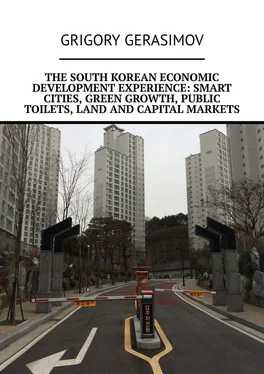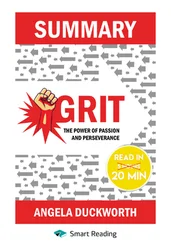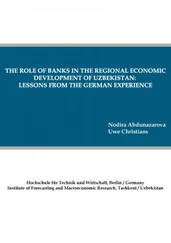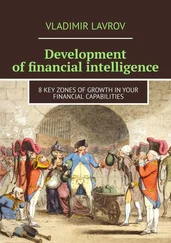The South Korean economic development experience: smart cities, green growth, public toilets, land and capital markets
Grigory Gerasimov
© Grigory Gerasimov, 2018
ISBN 978-5-4496-0758-4
Created with Ridero smart publishing system
1. Challenges and Prospects of the Korean Economy
2. Secrets of Korean Economic Development
3. Korea’s Export-Oriented Industrialization: Trade and Industrial Policy
4. Korea Smart Cities Development
5. The Case of Korean Cheonggy-cheon Stream Restoration
6. Solid Waste Recycling Policies in Korea
7. Public Toilet Development in Korea
8. Korea’s Capital Market
9. Korea Governance Reform
10. Korea’s Green Growth
11. Korean Land Market
Challenges and Prospects of the Korean Economy
The International Monetary Fund (IMF) classifies South Korea as an Advanced Economy and the Bank for International Settlements (BIS) classifies South Korea in the emerging market group. The Financial Times Stock Exchange (FTSE) classifies South Korea as a Developed Market since 2009 and MSCI classifies South Korea as a part of Emerging Market Indices. The World Bank made a comprehensive study for 101 countries and suggested that Korea in the list of countries, which overcame middle income growth traps successfully. South Korea soon to expect become a member of so-called 50—30 club: country with population over 50 million and per capita income higher than 30,000 USD. Korea became the first aid recipient-turned-donor country of the world. Korea joined OECD Development Assistance Committee (DAC) in 2010, in the middle of an economic crisis and Korean government increased the budget to support foreign aid activities. Korea was the only economy with sovereign rating upgraded by all three credit rating agencies (CRA) during crisis: S&P upgraded from A+ to AA- on September 15, 2015. Korea is the first Asian country that signed Free Trade Agreements (FTA) with both US and the EU. Korea also signed FTA with China in 2015. It means that Korea have FTAs with all “Big Three” economies of the world. Korean economy rapidly has transformed from the least developed country to one of the most advanced economies.
There are three key sources for the past economic growth in Korea: outward-looking development strategy, flexible adaptation of economic policies and adherence to market principles. In 1950s Korea focused on import substitution industries and then switched to export promotion. From 1960s Korean government supported export promotion policies and activities. It was one of factors to maintain global competitiveness of Korean economy. By opening-up the market and encouraging competition the government failure was minimized and corruption prevented by market discipline. Korean government successfully adopted policies correspondent to economic development challenges. Entrepreneurship enabled firms to take risks for returns and lead technology development in Korea.
The potential growth in Korea is projected to decline to 2% after 2030 mainly due to shrinking working-age population, lower female and youth labor force participation rate and under-utilization of elderly population. Korea SME’s have a low productivity growth related to service sector slowdown. Major reforms are needed in following areas: dual labor market to be more flexible, financial safety net to strengthen the governance structure.
Korean economic miracle characterized differently from other countries, because in Korea economic growth was achieved with equity. Economic growth and equity came together until late 1990s in Korea. This is fundamental difference between Korean economic achievement and economic performance of other countries. Korea stands to join the club of major advanced economies. In a globalized world, the future of Korea will depend upon the competitiveness of non-tradable sectors.
Secrets of Korean Economic Development
Following the Korean War, Korea was rather poor country. Even in those years Korean government undertook a few very important initiatives, which amounted to efforts to build pillars as foundation for subsequent economic miracle. There were 4 such important pillars. And then in 1962 – 1971 was a period when an Outward-oriented Development Strategy Geared to Global Markets was successfully launched in Korea. In 1970s Korean government thought of the need of upgrading industrial structure in order to catch-up with advanced industrial countries. It was a background of promotion of heavy and Chemical industries. This promotion campaign was associated with intervention by the government in the market mechanism and that has provided Korean economy with resilience. When Korean economy resilience was undermined as a result of government intervention, there were few multiple external and internal crises for Korean economy. Those multiple crises forced the Korean government to undertake economic reforms and that reforms amounted to an effort to promote transition from a heavily government managed economy to a market-led economy in 1980s. It was a story of a first half of 1980s. In 1987 – 1996 Korea experienced a historic shift to democracy and for the subsequent 10 years Korea took measures to democratize various institutions as well as to internationalize the Korean economy. And those efforts were organized during terms of two successive Presidents: President Roh Tae-woo (1988 – 1993) and President Kim Young-sam (1993 – 1998). This internalization of economy was promoted amid prosperity and democratization. Despite all of these economics reforms, internalization process, there was one serious weakness of Korean economy, which was built during the 1970s and 1980s. This is a problem of a model of Chaebol’s, big business groups. This problem model was built in Korean system with intervention by the government in the market system in order to support failing industries and for which purpose government had directly managed the banking system itself. Korea had a government-led banking industry, which itself was not competitive industry. And within this banking system the banks played the role of support for Chaebols. The political could not afford Chaebol’s to fail, because Chaebols were too big. That was sort of guaranteed access by the big businesses to a bank lending. And also because of the shortage of domestic funds, the Chaebol’s wanted to borrow from the markets abroad. But in those days long-term funds transactions were tightly regulated by government. Chaebol’s and big business groups wanted to mobilize the funding from domestic system as well as from foreign capital markets. And that made Korean businesses vulnerable to the financial crisis in 1997 – 1998 and sudden movement of financial funds. And this is a nature of so-called Too-Big-To-Fail problem of Korean businesses. Despite the early effort to shift to the market-led economy in the early 1980s Korea failed to address these to Too-Big-To-Fail Moral Hazard Problem and quite contrary as result of heavy involvement in the market in the 1980s as well, in order to rationalize industrial investments and in order to address the problem of overlapping and excessive investments in heavy and chemical industries made in the 1970s, government promoted consolidation of investments and businesses. And that means enlarging the size of big businesses at the expense of smaller businesses and also that meant that government had to intervent in the banking operations heavily in order to direct the flow of funds in support industrialization. And that intervention created Too-Big-Too-Fail Hazard Problem as well as the size of Chaebol’s even much larger and that was the core of the financial crisis, which Korea experienced in the years 1997 – 1998. Advise by the IMF, Korea undertook a broad package of economic reforms, especially including the financial sector restructure and Chaebol’s sector restructure. Making banking operations basically independent by the government and political influence. In that way, the financial crisis in the late 1990s forced as well as helped Korea address Too-Big-Too-Fail Problem and basically to solve that problem. On the one hand this financial crisis was a price Korea paid for the government too much intervention in the market in the previous years, and the same time this financial crisis provided solution for that Moral Hazard Problem involving the Chaebol’s.
Читать дальше












